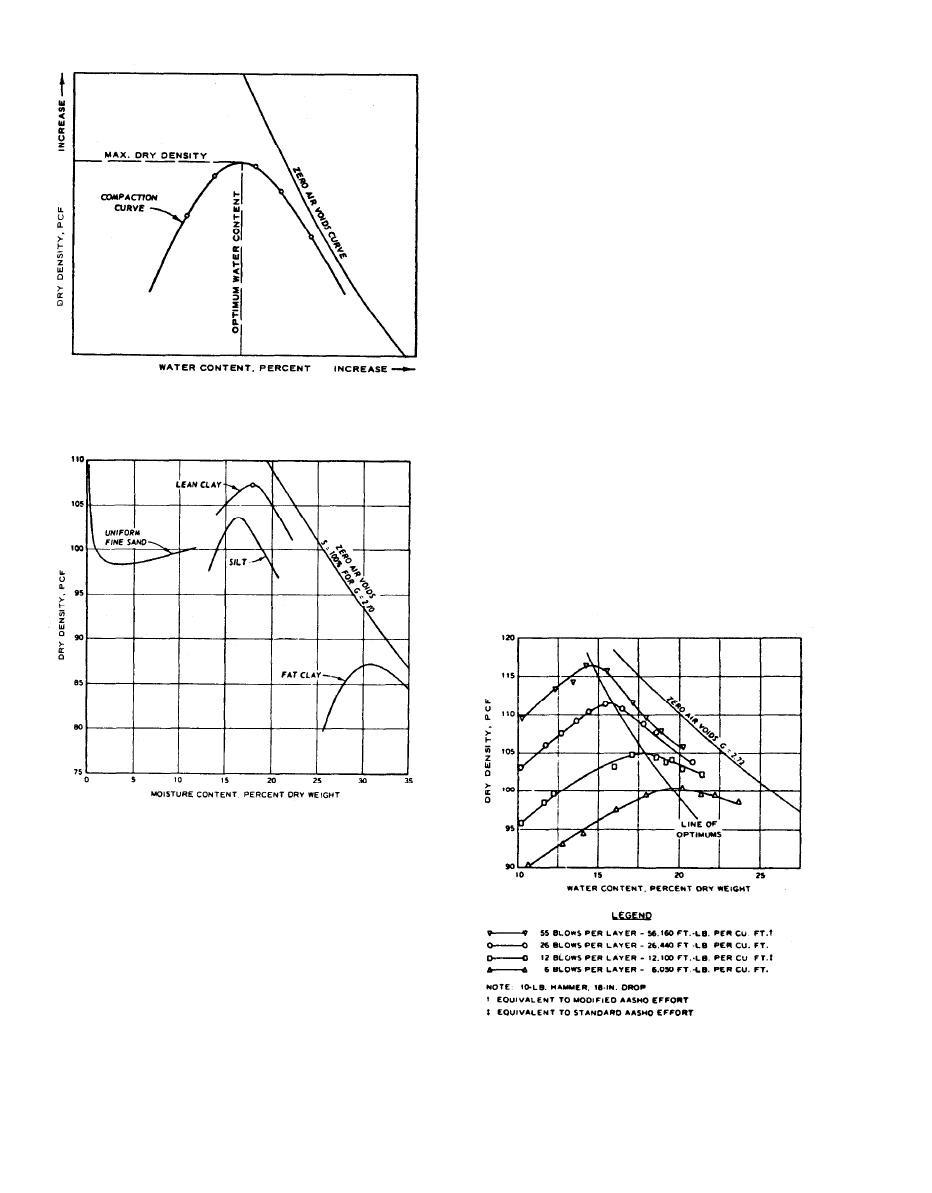
TM 5-818-4/AFM 88-5, Chap. 5
stiff and hard to compress, low, dry densities and high
values of air content result. As the water content is in-
creased, higher dry densities and lower air content
values are obtained. Increased densities result with an
increase in water content up to optimum water con-
tent. Beyond this point, the water in the voids becomes
excessive, and pore pressures develop under the appli-
cation of the compaction effort to resist a closer pack-
ing; lower dry densities are the result.
d. Influence of compaction effort. For most soils, in-
creasing the energy applied (compaction effort) per
unit volume of soil results in an increase in the maxi-
mum density (unit weight). This greater density occurs
generally at a lower water content. This phenomenon
is evident in both field and laboratory compactions.
Thus, for each compaction effort, there is a unique op-
timum water content and maximum dry density for a
given soil. Figure B-3 shows the effect of variation in
compaction effort on the maximum dry density and
Figure B-1. Compaction curve.
optimum water content for a lean clay (CL). Where
values of maximum dry density and optimum water
content are specified, they should be referenced to the
compaction effort used.
e. Influence of lift thickness. Compaction effort ap-
plied to a soil surface dissipates with depth. Therefore,
it is important that the lift thickness to be compacted
be commensurate with the type of soil and the compac-
tion effort. With proper consideration and control over
factors influencing compaction, most soils can be com-
Figure B-2. Typical compaction test curves.
ASTM D 1557 or modified compaction effort, depends
on the soil type and varies generally from about 125 to
140 pounds per cubic foot for well-graded, sand-gravel
mixtures to about 90 to 115 pounds per cubic foot for
fat clays. The optimum water content generally ranges
from zero for the sand-gravel mixtures to about 30 per-
cent for the fat clays.
c. Influence of water content. For a given fine-
grained soil and a given compaction effort, the water
content determines the state at which maximum dry
Figure B-3. Molding water content versus density-lean clay (labora-
density occurs. At low water contents when the soil is
tory impact compaction).
B-2


 Previous Page
Previous Page
